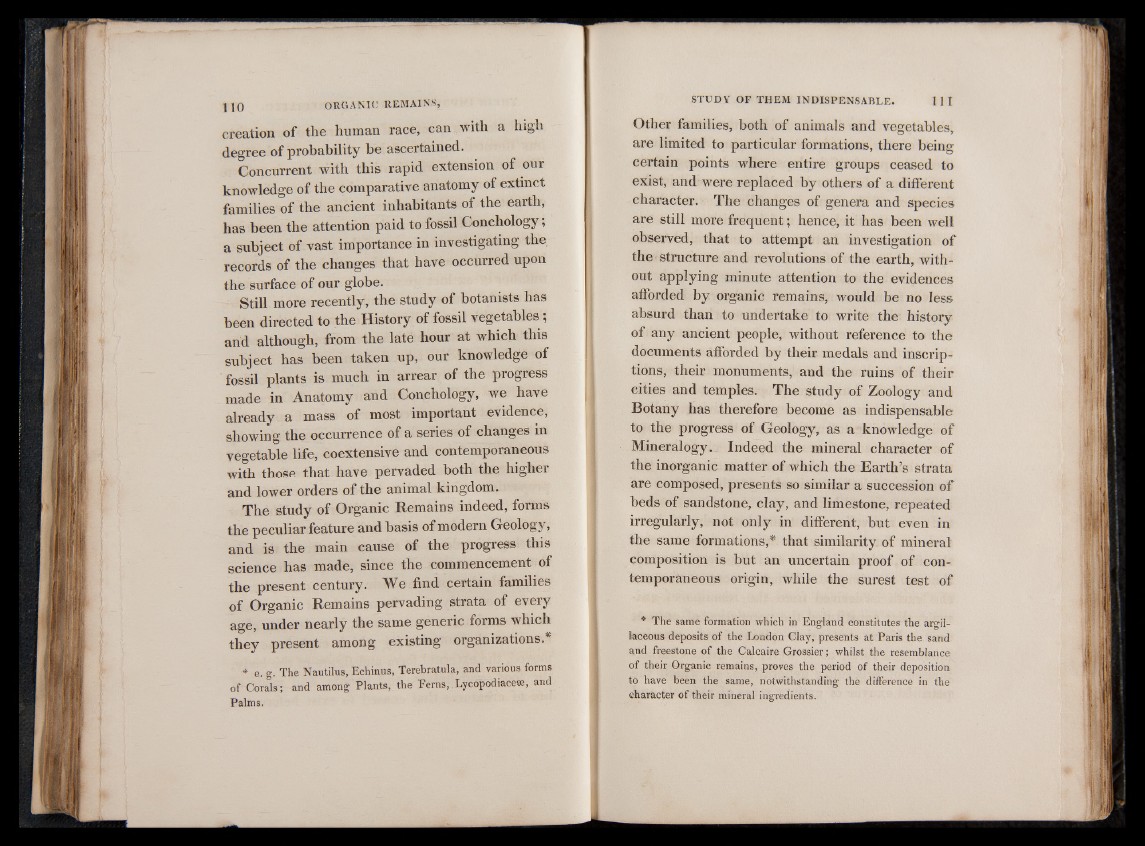
creation of the human race, can with a high
degree of probability be ascertained.
Concurrent with this rapid extension of our
knowledge of the comparative anatomy of extinct
families of the ancient inhabitants of the earth,
has been the attention paid to fossil Conchology,
a subject of vast importance in investigating the
records of the changes that have occurred upon
the surface of our globe.
Still more recently, the study of botanists has
been directed to the History of fossil vegetables ;
and although, from the late hour at which this
subject has been taken up, our knowledge of
fossil plants is much in arrear of the progress
made in Anatomy and Conchology, we have
already a mass of most important evidence,
showing the occurrence of a series of changes in
vegetable life, coextensive and contemporaneous
with those that have pervaded both the higher
and lower orders of the animal kingdom.
The study of Organic Remains indeed, forms
the peculiar feature and basis of modern Geology,
and is the main cause of the progress this
science has made, since the commencement of
the present century. We find certain families
of Organic Remains pervading strata of every
age, under nearly the same generic forms which
they present among existing organizations*
* e. g. The Nautilus, Echinus, Terebratula, and various forms
of Corals; and among Plants, the Ferns, Lycopodiaceæ, and
Palms.
Other families, both of animals and vegetables,
are limited to particular formations, there being
certain points where entire groups ceased to
exist, and were replaced by others of a different
character. The changes of genera and specie»
are still more frequent; hence, it has been well
observed, that to attempt an investigation of
the structure and revolutions of the earth, without
applying minute attention to the evidences
afforded by organic remains, would be no less
absurd than to undertake to write the history
of any ancient people, without reference to the
documents afforded by their medals and inscriptions,
their monuments, and the ruins of their
cities and temples. The study of Zoology and
Botany has therefore become as indispensable
to the progress of Geology, as a knowledge of
Mineralogy. Indeed the mineral character of
the inorganic matter of which the Earth’s strata
are composed, presents so similar a succession of
beds of sandstone, clay, and limestone, repeated
irregularly, not only in different, but even in
the same formations,* that similarity of mineral
composition is but an uncertain proof of contemporaneous
origin, while the surest test of
* The same formation which in England constitutes the argillaceous
deposits of the London Clay, presents at Paris the sand
and freestone of the Calcaire Grossier; whilst the resemblance
of their Organic remains, proves the period of their deposition
to have been the same, notwithstanding the difference in the
character of their mineral ingredients.